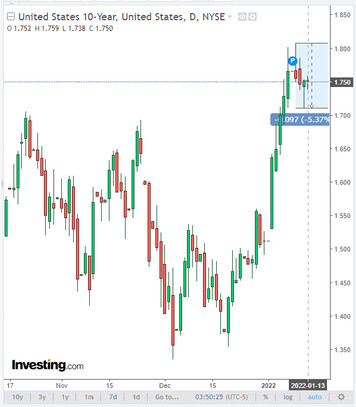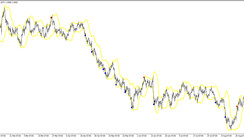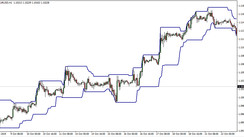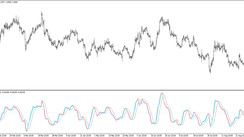Having broken through the lower limit of the range at around 95.54, the DXY dollar index fell sharply on Wednesday, reaching a local low of 94.89 by the end of yesterday's trading day. Since the opening of today's trading day, DXY futures have been falling again, reaching 94.75 by the time of this article, which is in line with September 2020 levels. It turns out that the dollar was not able to develop an upward trend, despite the tendency of the Fed's leadership to quickly complete the curtailment of the economic stimulus and quantitative easing program and start, as expected, in March, to raise interest rates. This decision was made by the Fed leaders following their December meeting. After it, the DXY dollar index was in the range between the levels of 96.94 and 95.54 for a long time. And yesterday, the breakthrough of this range finally took place, only not up, as many expected, but down. DXY dropped sharply yesterday and continues to decline today. What was the impetus for the mass closing of long positions in the dollar, because fresh data was published yesterday, indicating another acceleration in inflation?
Consumer prices rose 7.0% year-on-year in December, the highest since June 1982 (annual price increase in November was 6.8%), the US Department of Labor said yesterday. This seems to have spooked investors. Their backlash against US inflation accelerating to its highest since 1982 means that the market has already priced in the dollar for the likely path of the Fed's interest rates, but if inflation continues to rise at the same rate, the Fed may not be able to keep it by steadily raising interest rates, which creates the threat of hyperinflation, and this directly affects the value of the dollar.
According to the CME Group, traders are quoting the first rate hike in March and expect three to four increases this year. Immediately after the release of inflation data, the yield on 10-year US government bonds even fell slightly, falling below 1.72%, which indicated growing concerns about accelerating inflation. At the same time, although the yield of 10-year bonds declined yesterday, today it is near the middle of the range between the local recent maximum of 1.808% and yesterday's local minimum of 1.711%.

Traders are still set on the fact that the Fed, after raising interest rates, will begin to reduce its asset portfolio (the Fed's balance sheet is now $8.8 trillion). The current accelerated decline in asset purchases by the Fed and expectations of the start of a cycle of interest rate hikes in March are already pushing US Treasury yields higher. But if the Fed begins to reduce its balance sheet, this will cause an even greater decrease in the cost of bonds and, accordingly, an increase in their yield, and this, in turn, will help strengthen the dollar.
As Cleveland Federal Reserve Bank President (and voting member of the FOMC) Loretta Mester said yesterday, she would like to see the Fed start cutting its balance sheet "as soon as possible". “Action needs to be taken to ensure” a reduction in inflation, Mester said. “If the state of affairs that we are seeing today continues, then in March I will support raising rates...”. Mester reiterated that she believes the Fed will raise rates three times in 2022. However, another member of the Fed's leadership and St. Louis Fed chief James Bullard on Wednesday said it would now appear necessary to raise interest rates four times to curb high inflation. "We want to get inflation under control in a way that doesn't harm the real economy, however, we are also determined to bring inflation back to our target of 2% over the medium term", Bullard said.
Investors are now assessing high inflation in the US and the likelihood that the Fed will have to raise rates more aggressively this year to contain price increases. So far, the threat of higher inflation is tipping the balance in favor of a weaker dollar.
It is possible that the dollar may still weaken for some time, until more aggressive signals from the Fed's leadership regarding the pace and amount by which interest rates will be increased by the Fed in the near future.
And as long as the dollar quotes take into account 3 increases (by 0.25%) in interest rates this year, and the acceleration of inflation in the US continues at the same pace, the weakening of the dollar is likely.





